Diamonds
Stone
Origin
Shape
Our easy to use search is a great way to specify the exact traits you are looking for so that you can buy loose diamonds quickly and easily. Whether you are looking to create the perfect engagement ring, or simply want to design an elegant accessory, you will find the perfect stone for your taste and budget. You can save money by finding your own diamond, rather than simply going with whatever a retailer shows you. In addition, you will be better prepared to create jewelry of your own design that will match your vision perfectly.
There are many factors that can help narrow down the list of potential diamonds for you. The most immediate and likely most important trait for most people is carat. This is the weight of the stone on a scale, and is the main contributing factor in its overall size. Sorting by your ideal carat and price will help you find a great starting point for your search. From there, you can decide what other qualities you are most interested in.
The cut of a particular stone largely refers to its ability to reflect light and give off that signature shine we all love. A better cut grade will signify a diamond that has better proportions and finish and will be more luminous. Color is a grade scale that varies between completely colorless and a distinct yellow. Stones that are truly completely colorless are very rare, and very expensive as well. Find a balance between the color you want and the price you are willing to pay, as stones will go up in price the closer they are to colorless. Clarity is the last major trait to help narrow down your search. This refers to imperfections or markings in the stone that could reduce its brilliance. Grades range from flawless (FL), which means they have zero imperfections, to included (I1) and slightly included (S1-3). The closer to perfect a diamond is, the more it will cost! Most people will want a stone that looks clean to the naked eye, but moving closer to flawless will drive the price up quickly.
Figuring out exactly what you are looking for can be daunting. Decide what aspect of the stone is most important to you and start from there. Some people want the largest they can afford, others want the most brilliant. By setting your budget and the traits you need the most, you will find a variety of options that are sure to please. Buying loose diamonds does not have to be difficult, we can help you get the perfect for you today!
Where To Buy Loose Diamonds?
Allurez offers a stunning collection of loose diamonds in almost every cut, carat weight, clarity and color imaginable. Whether you’re looking for a moderately-sized princess cut for your own princess (or for yourself) or a pair of matched pear-cut diamonds to use in a set of custom earrings, you can find exactly what you need using our diamond selection tool. As for your shopping experience, rest easy knowing Allurez has top-notch customer service, flexible financing and even free shopping to make the buying process as enjoyable as possible.
How To Buy Loose Diamonds?
Shop for loose diamonds at Allurez, and the stone of your dreams is practically at your fingertips. First, get to know the meaning of the 4Cs and how those characteristics help determine what your ideal diamond will look like and cost. Then start your search. Simply dial in the shape, carat weight, cut, color, clarity, whether you want a lab-grown diamond or not and where you’d prefer your diamond originate from, and the search utility gives you all the relevant results. Now you’re free to buy your gems as is or pair them with your favorite setting to create custom jewelry that aligns with your vision.
What is custom jewelry?
The team at Allurez specializes in helping customers design their own jewelry. Many clients want to design their own engagement ring, creating wedding jewelry that suits the personal style of them or their sweetheart. From antique-inspired settings to gemstones or diamonds in a specific carat weight, cut or color, each element is chosen or tweaked to match the customer’s vision. You can upload a sketch, submit a list of design ideas or use an existing design as your starting point. Our user-friendly website makes it easy to get started, and flexible financing and award-winning customer service ensure the rest of the process is equally stress-free.
Who Buys Loose Diamonds?
People typically buy loose diamonds when they’re looking to create custom jewelry and want to hand-pick the gemstones that will be used in their final piece. Instead of choosing a ring, earrings or a pendant “off the rack,” you can buy loose diamonds that match your specifications and ensure every detail of those stones is in line with your expectations. You might buy loose diamonds to fix or upgrade a piece you already have, too. Perhaps a family heirloom is missing an accent stone or you want to switch out your diamond solitaire for a larger diamond with more clarity. Both situations call for a loose diamond backed by the right certification, just like you’ll find at Allurez.
How Much Are Loose Diamonds?
The cost of loose diamonds depends on the 4Cs: carat weight, cut, color and clarity. Think of each characteristic as if it’s on a sliding scale. The closer to perfection you expect each element to be, the more the final cost rises. But you can help control the price by balancing your expectations and prioritizing which of the Cs is most important. If you want a stone with a higher carat weight, perhaps choose a more affordable cut or sacrifice a bit in terms of color. Allurez also offers flexible financing to help bring your dream stone within reach.
Where Is The Best Place To Buy Diamonds?
Shop Allurez for all of your diamond purchases and you’ll be putting your trust in a company with a stellar reputation for superior customer service, phenomenal products and overall excellence. By sticking to online-only sales, Allurez is able to streamline the shopping process resulting in better jewelry at more affordable prices. From our 100% natural gemstones and certified diamonds to user-friendly tools like our Design Your Own custom jewelry utility, we have everything you need to shop comfortably and buy the jewelry or loose diamonds you’ve always wanted.
What Are The Best Diamonds To Buy?
There is no single “best diamond” or standardized way to choose a gemstone that’s perfect in every way. Diamonds are graded according to the 4Cs: carat weight, cut, color and clarity. Each of those characteristics is looked at on a sliding scale. For instance, the clarity scale for diamonds includes 11 grades starting with I (“included”) and running all the way up to FL, or Flawless. Obviously, a flawless diamond is desirable, but it’s also rare and very expensive. The best diamond for you will suit your individual needs, including how you want the stone to look and what fits your preferred setting. You can consult with one of our jewelers to help find the perfect diamond for you or use the online search tool.
What Does Loose Cut Mean?
“Loose cut” refers to a diamond that has been cut and polished but not yet mounted in a setting. Those standalone diamonds are ready to use in custom jewelry, so you can design your own pieces to include the perfect diamond or diamonds for you.


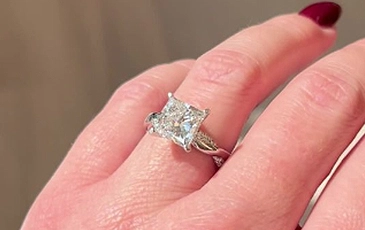
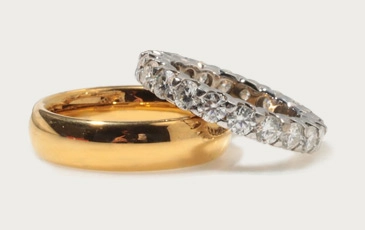
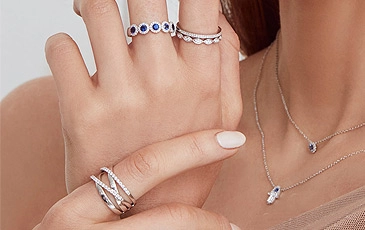
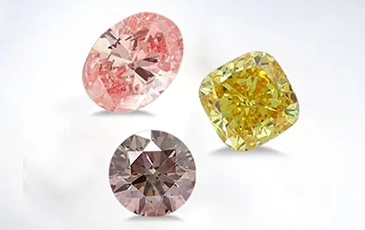


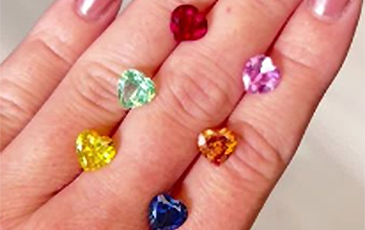

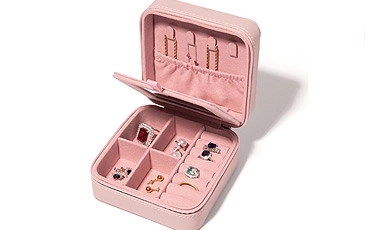
 as AMERICA'S BEST CUSTOMER SERVICE 2025 | 5 Years in a Row
as AMERICA'S BEST CUSTOMER SERVICE 2025 | 5 Years in a Row

